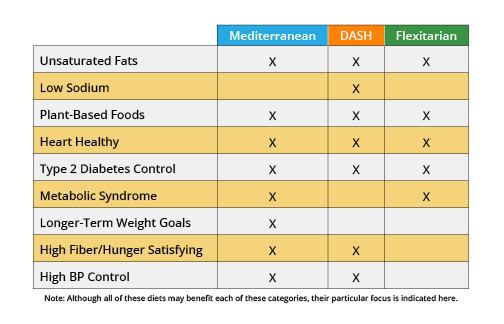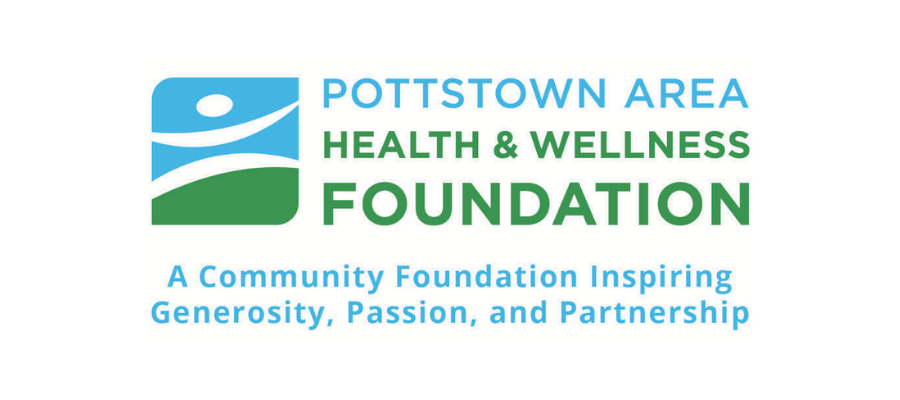Which Diet Is Best for You?

Forget about trendy diets and proceed cautiously with diets in general. The best way to eat is by consistently choosing healthy foods. Pottstown Area Health & Wellness Foundation (PAHWF) gathers some options to help you get the nutrition you need. Don’t worry. We didn’t forget about your tastebuds …
There are a few top choices when it comes to diets. However, it is important to note these are more a way of eating as opposed to restrictive dieting.That’s their secret sauce. Different from diets like grapefruit, Paleo, and Master Cleanse, a healthful diet encompasses multiple food groups. The variety and quality of the food makes it sustainable; it becomes an adoptable lifestyle. And a diet is only good if it is sustainable.
Prior to making dietary changes, always consult a healthcare professional. Here are some diets to consider alongside your practitioner’s advice.
Top-ranked Diets for Health
Mediterranean Diet
This diet focuses on heart-healthy unsaturated fats and plant-based foods.
 Studies show following a Mediterranean eating plan reduces the risk of heart disease, Type 2 diabetes, and general metabolic syndrome (multiple conditions that increase risk of specific health conditions). It also has potential to help achieve long-term weight-loss goals. Rich in high-fiber foods, this diet will not leave you hungry. (Bonus: You are less likely to snack on junk food.)
Studies show following a Mediterranean eating plan reduces the risk of heart disease, Type 2 diabetes, and general metabolic syndrome (multiple conditions that increase risk of specific health conditions). It also has potential to help achieve long-term weight-loss goals. Rich in high-fiber foods, this diet will not leave you hungry. (Bonus: You are less likely to snack on junk food.)
The popularity and limitless options of the Mediterranean diet make it easy to enjoy. The emphasis is on nutrition; however, there are plenty of choices to suit everyone’s taste. Recipes abound and include budget-friendly options.
Top ingredients: fish/seafood, including canned tuna and salmon; a variety of leafy greens; vegetables, frozen work well and don’t expire as quickly; beans, lentils, and chickpeas; whole grains; low-fat dairy; eggs; and poultry. Red meat and sweets (fruit) are eaten sparingly but not off limits as in some other diets.
Snack on nuts and fruit. Create salads and sprinkle with both of these, along with some seeds. Drizzle with olive oil, a Mediterranean staple.
DASH Diet
Created to help prevent or stop hypertension (high blood pressure), the Dietary Approaches to Stop Hypertension (DASH) diet is promoted by the National Heart, Lung, and Blood Institute. Although it is customized for cardiovascular health, the DASH diet can be a healthy way of eating for anyone. An ounce of prevention is worth a pound of cure!
This diet focuses on fruits, vegetables, whole grains, lean protein, and low-fat dairy. It limits sugary foods and drinks, fatty meats, full-fat dairy, and—most importantly—sodium. The sodium limit with this diet is 2,300 milligrams daily, which often is lowered to 1,500 milligrams. Alcohol also should be avoided. If you follow this diet specifically for heart health, you need to be strict with the sodium count.
Top ingredients: whole grains; low-fat dairy; fish, chicken, and turkey breast; eggs; oatmeal; assorted beans; fruits and veggies; and unsalted nuts. Beans and lentils also are allowed. If you buy them canned, then opt for salt-free.
Snacks, canned goods, and other convenience foods can be found with reduced or eliminated sodium, which makes following this diet easier. However, be aware that salt-free and fat-free often signal the inclusion of other unhealthy additives for flavoring and shelf life.
Finding healthful snacks, experimenting with different spices to replace salt, and accounting for special treats will help you maintain this diet.
Flexitarian Diet
If you want to cut back on eating meat without completely eliminating it, this diet plan is for you. You gain the benefits of being vegetarian with flexibility to enjoy occasional meat dishes. This less-exclusive option often makes for improved adherence. It eliminates the “you always want what you cannot have” downfall.
As with a vegetarian diet, most nutrients will be consumed from plant-based foods. This can be especially helpful for improved heart health, reduced inflammation, and decreased risk of Type 2 diabetes. Additionally, it is planet friendly and easier on your wallet.
Top ingredients: beans, lentils, tofu, nuts, seeds, peas, and eggs for main protein choices. Incorporate plenty of fruits, veggies, whole-grains, and low-fat dairy.
Consider gradually reducing your meat intake. Replace one serving of meat at a time, working your way through the week. Or, perhaps start with one day each week. Replace meat portions with meat-free options at your own pace, setting weekly and monthly goals. For example, over four weeks, you can aim to reduce meat to once weekly.
Healthful Lifestyle
Regardless of which diet you choose to follow, note the common thread. Fruits, vegetables, and whole-grains are essential components. Sugar, sodium, and fatty foods should be avoided. Plus, depending on your specific health needs, you may wish to focus on foods high in calcium, vitamin D, fiber, or magnesium. Most people in the U.S. are deficient in these nutrients.
Eat to fuel your body. Exercise and nutrition complement each other in creating your healthiest life. Find activities you enjoy and pair them with healthful foods that satisfy your palate as well as your physical and mental needs. Visit the PAHWF website for recipes and other healthy living tips. Improve your health and quality-of-life with every forkful.
Sources
CDC.gov, Healthy Eating Tips
Everyday Health, The 10 Most Famous Fad Diets of All Time
USNews.com, Best Diets for Healthy Eating 2024
